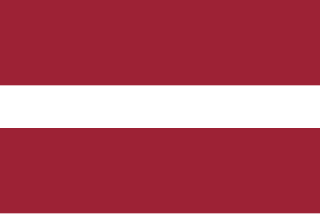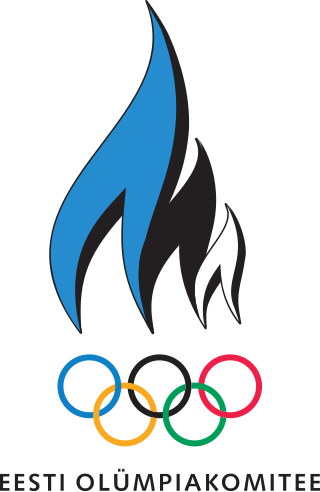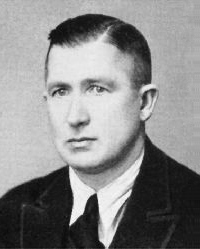
Basketball at the 1936 Summer Olympics was the first appearance of the sport of basketball as an official Olympic medal event. The tournament was played between 7 August and 14 August 1936 in Berlin, Germany. 23 nations entered the competition, making basketball the largest tournament of the team sports, but Hungary and Spain withdrew, meaning 21 competed.
Estonian Sports Association Kalev is a sports association in Estonia, founded in 1901.

The Estonia men's national basketball team represents Estonia in international basketball matches. They are controlled by the Estonian Basketball Association. The team competed in their first international tournament at the 1936 Olympic Games. Estonia has also qualified for the EuroBasket six times overall, with their best results coming in 1937 and 1939. However, after 1939, Estonia halted national team activities due to the occupation of the Baltic states during World War II. Estonia would later rejoin FIBA in 1991, after regaining independence from the Soviet Union.

Latvia competed at the 1936 Summer Olympics in Berlin, Germany. 29 competitors, all men, took part in 16 events in 6 sports. It would be the last time that Latvia would compete at the Summer Games as an independent nation until the 1992 Summer Olympics. After the nation was occupied by the Soviet Union in 1940, Latvian athletes were forced to compete at the Olympic Games as part of the USSR delegations.

Estonia competed at the 1924 Summer Olympics in Paris, France.

Estonia sent 27 athletes to the 2006 Winter Olympics in Turin, Italy. Half of them competed in cross-country skiing, where Estonia won all of their three Turin Olympic medals. Olympic champion Andrus Veerpalu participated on his 5th Winter Olympics.

Germany was the host nation and top medal recipient at the 1936 Summer Olympics in Berlin. 433 competitors, 389 men and 44 women, took part in 143 events in 22 sports.

Estonia competed at the 1928 Summer Olympics in Amsterdam, Netherlands.

Joann Lõssov, also known as Ioann Fyodorovich Lysov, was a Soviet and Estonian basketball player. Lõssov trained at VSS Kalev, in Tallinn. He was named MVP of the 1947 EuroBasket. Member of the Soviet Union basketball team in 1947–52, from 1949, the captain and points guard. After his career as a player, worked as the head coach of the Soviet Union women’s team in 1953–58 and helped to organise special trainings of the Soviet Union team. Elected to the Hall of fame of Estonian basketball in 2010.

The Estonian Olympic Committee is responsible for Estonia's participation in the Olympic Games.

The following is an alphabetical list of articles related to the Republic of Estonia.
Sport plays an important role in Estonian culture. Estonia first competed as a nation at the 1920 Summer Olympics, although the National Olympic Committee was established in 1923. Estonian athletes took part at every Olympic Games until the country was annexed by the Soviet Union in 1940. The 1980 Summer Olympics sailing regatta was held in the capital city Tallinn. Estonia has won most of its Olympic medals in wrestling, athletics, weightlifting, and cross-country skiing.

Johannes Leopold Villemson was an Estonian runner who competed at the 1920 Summer Olympics. He was eliminated in the first round of the 800 m and 1500 m events.

Estonia competed at the 2012 Summer Olympics in London, United Kingdom from 27 July to 12 August 2012. This was the nation's eleventh appearance at the Summer Olympics.

Estonia competed at the 2016 Summer Olympics in Rio de Janeiro, Brazil, from 5 to 21 August 2016. It was the nation's twelfth appearance at the Games and seventh consecutive in the post-Soviet era.
100 great Estonians of the 20th century is a list of notable Estonians compiled in 1999 by Eesti Entsüklopeediakirjastus, Eesti Päevaleht, National Library of Estonia, Radio Kuku, and TV3.
Herbert Aleksander Juhan Niiler was an Estonian American basketball player and coach.
Georg Vinogradov was a Russian-born Estonian basketball player.









